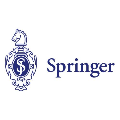We consider a scalable user-centric wireless network with dynamic cluster formation as defined by Bj\"ornsson and Sanguinetti. Several options for scalable uplink (UL) processing are examined including: i) cluster size and SNR threshold criterion for cluster formation; ii) UL pilot dimension; iii) local detection and global (per cluster) combining. We use a simple model for the channel vector spatial correlation, which captures the fact that the propagation between UEs and RRHs is not isotropic. In particular, we define the ideal performance based on ideal but partial CSI, i.e., the CSI that can be estimated based on the users to antenna heads cluster connectivity. In practice, CSI is estimated from UL pilots, and therefore it is affected by noise and pilot contamination. We show that a very simple subspace projection scheme is able to basically attain the same performance of perfect but partial CSI. This points out that the essential information needed to pilot decontamination reduces effectively to the dominant channel subspaces.
翻译:我们考虑的是按Bj\'ornsson和Sanguinetti定义的动态集群形成可扩缩的用户中心无线网络。我们研究了可扩缩的上行链路(UL)处理的若干选项,包括:(一) 集群大小和集群形成SNR门槛标准;(二) UL试点层面;(三) 本地探测和全球(每个集群)结合。我们用一个简单的导体矢量空间相关模型来捕捉UES和RRFs之间的传播并非非非化学性质的事实。我们特别根据理想的但部分的 CSI,即根据用户对天线分组连接的估计CSI,确定了理想的性能。在实践中,CSI是来自UL试点的估算,因此受到噪音和试点污染的影响。我们表明,一个非常简单的子空间预测计划基本上能够实现完全但部分的 CSI的相同性能。我们指出,试点净化所需的基本信息将有效降低到主导通道子空间。


